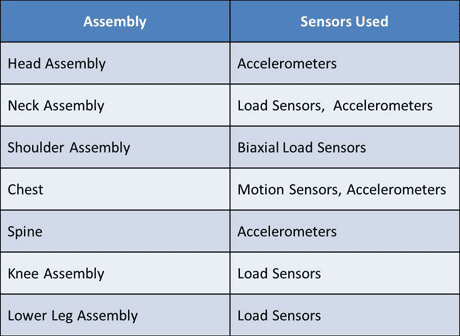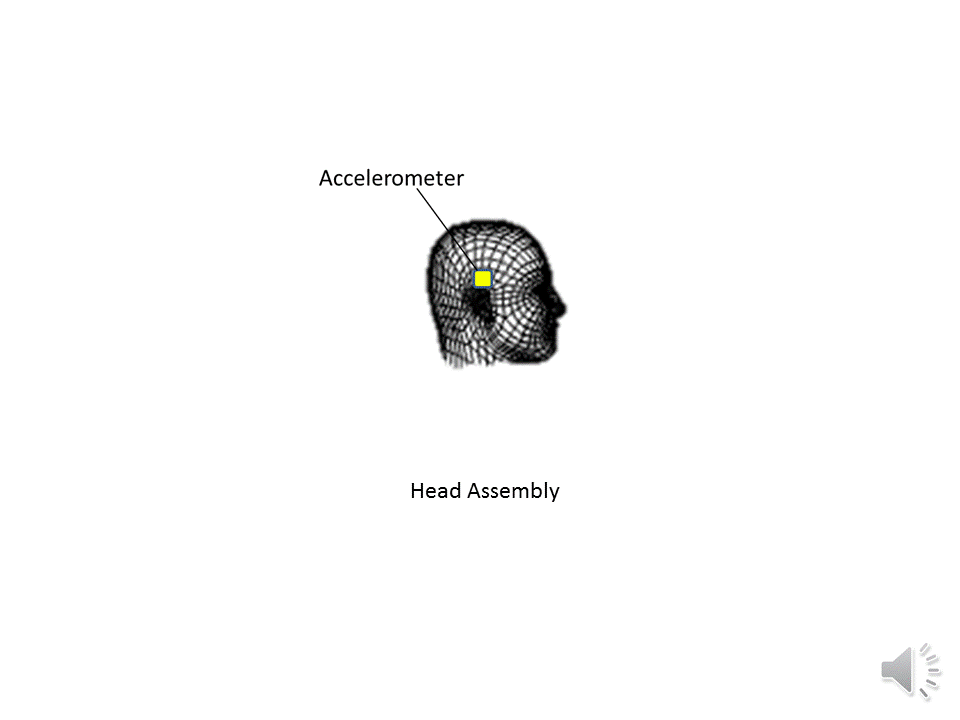Anthropomorphic Test Dummy (Crash Test Dummy)
by Arun Venkitakrishnan, Clemson Automotive Engineering Graduate Student
- Basic Description
-
Crash Test Dummies also known as Anthropomorphic Test Dummies (ATDs) are calibrated devices that simulate all the physical properties of human. ATDs record the injury potential in the event of simulated accidents/vehicle impacts. the data includes information like velocity of impact, deceleration rates at various instances. The sensors fitted all over the body measures impact forces, deformation level etc. These datas are then used for developing safer and more ergonomic cars.
A modern crash test dummy has over 200 sensors mounted all over the body that measures various parameters mentioned above.
- Sensors in a Crash Test Dummy
In order to acquire information (Data Acquisition) on vehicle safety, a variety of sensors are fitted on the vehicle crash test dummies. These mainly consist of Accelerometers, Load sensors and Motion sensors.
- Accelerometers : Accelerometers measure how fast a body part moves upon impact. It measures this in g's. In a real world scenario, if a driver meets with an accident, and his head hits the steering wheel, head would move very quickly upon impact. But if there had been an airbag, head would move more slowly because the impact is absorbed. Accelerometers are placed inside the dummy's head, chest, pelvis, legs and feet. This data can be used to determine the probability of injury.
- Load sensors : Transducers that converts an input mechanical force into an electrical output signal. It measures the amount of force on different body parts during a crash.
- Motion sensors : These sensors are fitted in the dummy's chest. They measure how much the chest deflects during a crash. There is a limit to which the chest could be compressed (2.5 inches) beyond which the accident can be very fatal.
There are few major assemblies/`parts on the ATD where the sensors are mounted. They are
- Head Assembly
- Neck Assembly
- Shoulder Assembly
- Chest
- Spine
- Knee Assembly
- Lower Leg Assembly

The assemblies and the sensors used are shown below :-

- Position of major sensors

- Major Injury Criteria
An injury criterion is defined as a physical parameter or a function of several physical parameters which correlates well with the injury severity of the body region under consideration. Frequently used parameters are those quantities that relatively easy can be determined in tests with human substitutes like the linear acceleration experienced by a body part, global forces or moments acting on the body or deflection of structures [Wismans, 1994].
- Head Injury Criteria : The Head Injury Criterion (HIC) is a measure of the likelihood of head injury arising from an impact. This includes the effect of sudden deceleration and the duration of deceleration. A HIC value of 1000, one out of six people will suffer life threatening brain injury.
- Neck Injury Criteria : It is a measure of injury on the neck when loads are exerted on the top of the head, in line with the spinal cord.
- Chest Injury : This is based on the maximum deceleration of the chest. As explained before, there is a limit to which the chest could be compressed (2.5 inches) beyond which the accident can be life threatening.
- Types of Crash Test Dummies
Each crash type uses specific type of Crash Test Dummy (ATDs). These include Front Impact ATD, Side Impact ATD, Biofidelic Rear Impact Dummy, and Rear Impact Dummy
- For More Information
- [1] Crash test dummy, Wikipedia.
- [2] History of Airbags, Motorvista.
- [3] Crash Test Dummies Really Use Their Heads, www.chevroncars.com
- [4] Types of Crash Test Dummies, EHow.com.
- [5] History of Crash Test Dummies, www.humaneticsatd.com, 2010.
- [6] How Crash Testing Works, www.howstuffworks.com
- [7] Euro NCAP | Audi Q3 | 2011 | Crash Test ,YouTube, Oct 17, 2011.
|

